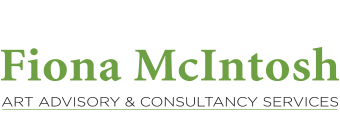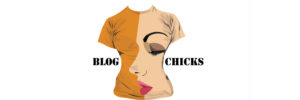Not every professional practising artist worth their salt is represented within the gallery system. Alot of people work outside the commercial networks, just doing their own thing. Some are particularly private; others align themselves with artist-run spaces or pop-up spots. Some self manage their careers on-line via their website. Facebook is becoming a common place for an artist to ‘exhibit’ their wares.
At times, for the viewer, the gallery system feels very closed. Yes, there are some great shows on at any given time, but the aesthetic and what is available can be frustratingly limiting. Credibility comes in many forms (including having a commercial dealer to speak for you) but ultimately it is the enduring quality of the work which defines it. I remember as a young, very impressionable student being instructed by my mentor that “the difference between a good and lousy work of art is its integrity and honesty”. Tricky at times to interpret but worth holding onto when considering art that has only itself as a reference point. It isn’t about who shows with whom and sometimes it isn’t even about what gets bought up quickly: it’s about the artwork itself and the artist’s ability to tell his/her own story.
Peter Stevens is one such artist. He has been working consistently over a 25-30 year period, mostly outside a commercial arena and has built up a significant body of work. He has shown publicly in the past – more recently with Tim Olsen Gallery www.timolsengallery.com, in prize exhibitions Paddington Art Prize and at the moment in a group printmaking exhibition at Danks St in Wilson St Gallery www.wilsonstreetgallery.com.au; and, for someone without a dealer, his work has been well collected.
A graduate from Sydney College of the Arts in printmaking and painting in the mid 80s, Stevens completed his post grad degree in printmaking. As a young artist, he worked as a studio assistant to such luminaries as Robert Jacks, Tim Storrier and Brett Whiteley. Whilst none of them specifically influenced Peter’s own style, all of them did impress on him the key to a sustaining career lies in finding one’s own voice, an independent voice which remains true to one’s own self.
Steven’s own practice has been the pursuit of this – the search to establish his own mark.
His is a steady continual progress, working across painting and printmaking, sometimes combined, experimenting with technique, media, scale and colour. Underlying his core subject is his love of the Aussie bush which draws him back to childhood memories of discovery, fascination and boyhood wonder. Peter’s view of the Aussie bush is not an expansive all encompassing one, rather observations of the detail within it. Over the past decade it is the image which has remained consistent – birds and moths, not random images he has fixed on but ones with personal meaning and resonance. He takes the motif and sticks with it, working it over and over, to see where he can take it and how far it can go.
 |
| Beatles from the Dodd Collection, Queensland Museum |
The birds are tied to memories of his childhood and his grandfather, a hobbyist ornithologist, in western NSW. It was after the death of his grandfather that Peter gained access to his precious library of books which became, in the artist’s hands, the research and the canvas.
The more recent moths allude to Steven’s fascination with the collector and the classification of nature, “…a sort of scientific exploration without the need for scientific accuracy through the exploration of painting.” (Peter Stevens 2008) He was inspired by the Frederick Parkhurst Dodd Collection of the Queensland Museum. It is a great story about an early 20thC banker-turned-insect enthusiast in FNQ who pursued his passion to collect, document and classify insects, including moths. Known as The Butterfly Man of Kuranda Dodd enjoyed creating amazing displays of his collections, in highly decorative beautiful ways, to highlight the incredible beauty of the bug.
 |
| Peter Stevens Moths IV 2011 oil on canvas 97x102cm |
In Moths IV the moths are self-consciously displayed as if being studied through a lens. They are held still and suspended, contained over a series of translucent white circles – a bright light? a petrie dish? Either way their beauty is captured and celebrated.
 |
| Peter Stevens Yuraygir sea eagle II 2011 oil on canvas 59 x 62cm |
A very recent work Yuraygir sea eagle II sees Stevens working with both printmaking and painting. A tightly patterned backdrop supports the aloof bird in space, as it sits and turns slightly, this time to assure us of its place in the natural world, rather than on display in a museum. These are quietly beautiful pieces.
 |
| Dorothy Napangardi Karntakurlangu Jukurrpa no 2, 2010 intaglio ed 30 image courtesy the artist and Whaling Road Print Studios |
Stevens has continued to work as a master printmaker for almost 20 years with Diana Davidson at Whaling Road Prints Studios. A master printmaker basically recreates an artist’s work as a print. Together Peter and Diana have collaborated with many well known and respected Australian artists to create suites of prints which reveal the essence of the artist’s hand,a strong empathy for their work and a deep knowledge of the many printmaking techniques which they so willingly share. Artists such as Guy Maestri, John Firth-Smith, Luke Sciberras, Dorothy Napangardi and most recently with Elizabeth Cummings.
Not all good artists are household names or in national collections. The gift, combined with skill, knowledge, experience, confidence and history are attributes that define all serious artists. Stevens has this in spades.
As for the relationships developed between the master printmaker and artist, that is a subject worthy of a blog on its own – soon ……


No Comments Yet